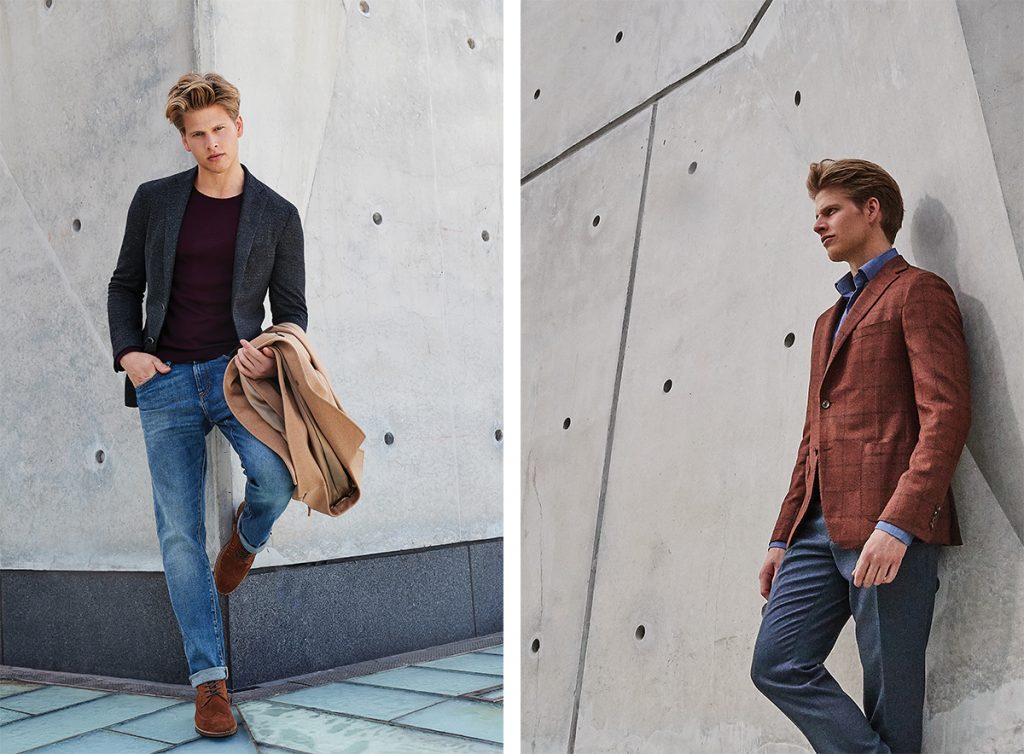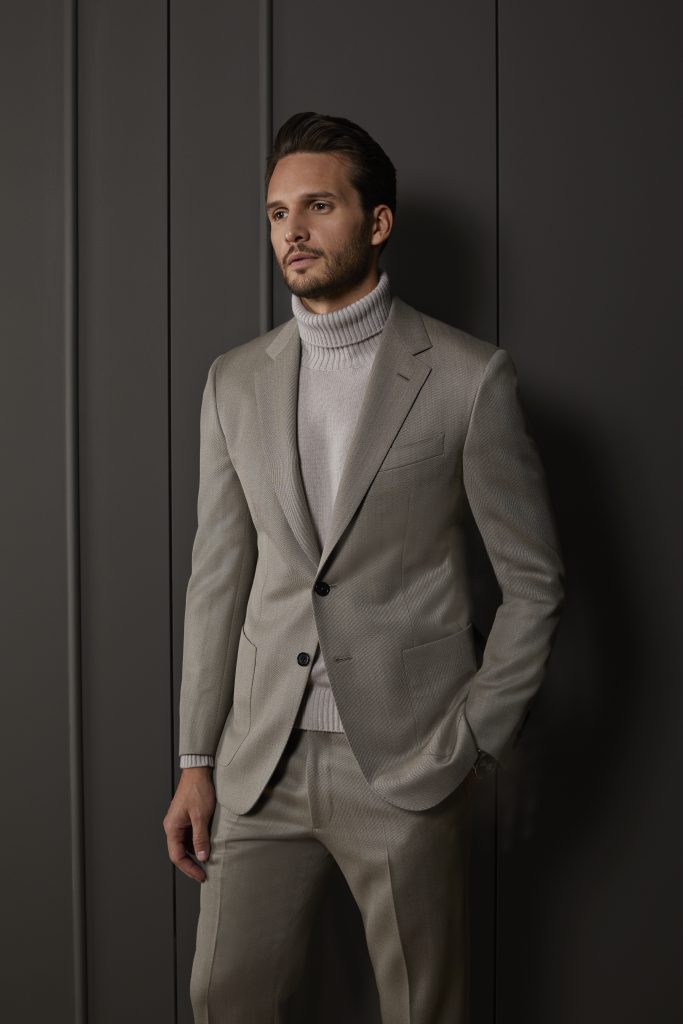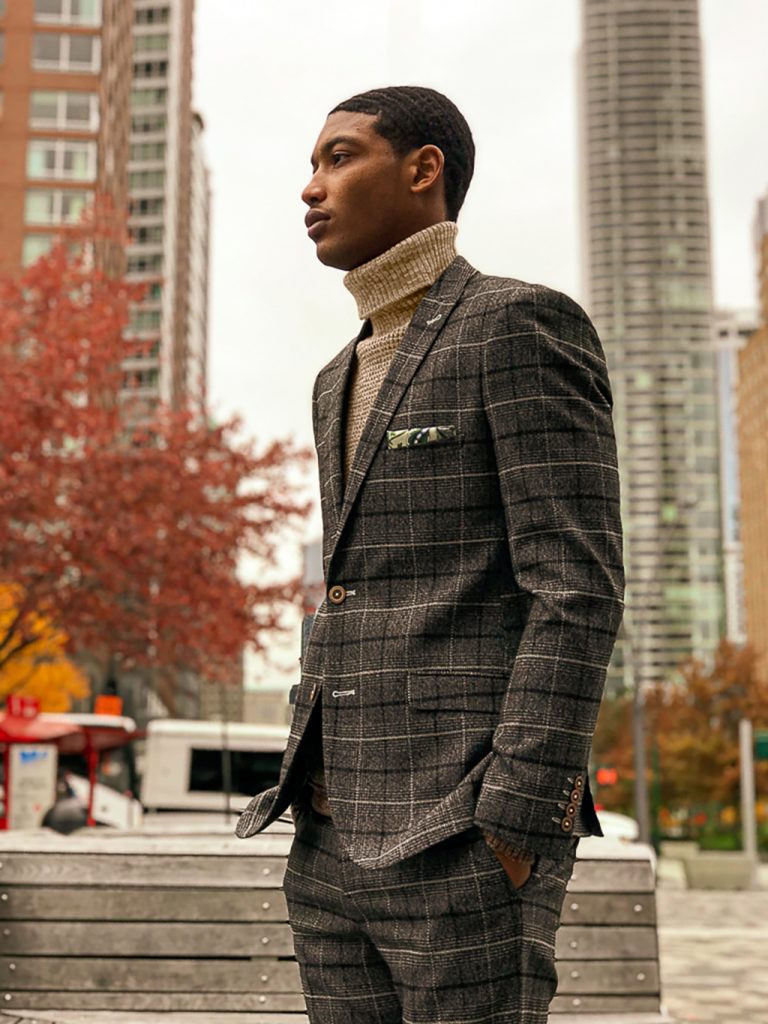CHANGE IS COMING TO THE TAILORED CLOTHING MARKET


With few exceptions, selling reports on 2019 tailored clothing business have not been great. While the sky’s not falling, both department and independent specialty stores are struggling to maintain volume. At department stores, clothing business has been increasingly promotional (if that’s even possible) while many independent stores trying to sell suits at ticket price are finding themselves with excess inventory. In most upscale stores, luxury brands have fared better than most.
Says Steve Pruitt, retail analyst at Blacks Consulting, who advises top luxury stores across the country, “Clothing is soft across the markets, but not as bad as we sometimes hear. Overall clothing is running down (January-September) three percent. While sportscoats are up two percent, suits are down five percent and special order (now 30 percent of clothing volume in upscale stores) is down four percent.”
Pruitt maintains that the bigger issue for both retailers and manufacturers is the lack of newness in suits and sportscoats. “Weddings seem to be the biggest driver for demand in suits, so it’s become purely an event-driven business. Of course, there are isolated markets that still require suits for business but this is declining as the customer ages.”
Dan Farrington from Mitchells stores acknowledges that sportswear and footwear are driving menswear sales but tries to give it a positive spin. “The fact that we’re not in a tailored cycle presents us with an opportunity to gain market share. Clothing is such an important part of our business, we can’t resign ourselves to doing less. We’d like to think that as a suit becomes more an occasion purchase, customers will spend more for higher quality.”
Retail analyst Danny Paul is also somewhat optimistic. Although in the stores that he counsels, suits have been down for 10 consecutive months and 17 out of the past 18 months, he’s encouraged by some growth in sportcoats. “Sportcoat sales in October were the strongest we’ve seen so far this year; they appear to be the one bright spot in tailored clothing. Made-to-measure posted its fourth consecutive monthly increase, although some of those months were small gains. Dress trousers sales have been down for eight of the last 10 months, no doubt affected by the strength in casual pants and five pockets. It’s apparent that something new and exciting needs to be added to all tailored classifications, especially suits, to pique customer interest and give clothing the lift it needs for 2020.”
Pruitt agrees. “Moving forward, retailers need to have upfront conversations about the kinds of events that can drive clothing business. Most importantly, the modeling needs to change. We’ve seen fashion presentations with a new focus on pleats, something that could drive a new coat silhouette. But most retailers are slow to adapt, reluctant to introduce this change to their clients.”
Farrington admits some reluctance. “We’re seeing a few looser pant models and some single pleats, but in general, we have no indication that our customers are ready for this since guys seem comfortable with today’s slim (but not tight) fit.” Like most upscale retailers, Farrington says his clothing business is best at the very high end: Kiton, Brunello Cucinelli, Brioni. Made-to-measure (averaging 20 percent to clothing sales but ranging dramatically by store) is also holding its own. “I love made-to-measure: no inventory, no markdowns, no returns… We need to further nurture this business.”

Johnell Garmany at Garmany in Red Bank, New Jersey also reports strong business at the luxury level. “We sell Kiton jackets that are $7,500-$9,000; I just sold one for $12,000. Other key brands are Canali, Ravazzolo, and Isaia. Made-to-measure is also growing, especially our own label: from $700 to Italian-made suits for $4,000-$5,000.”
At 25-30 percent of Garmany’s menswear, tailored clothing remains healthy. “Even guys who no longer wear suits every day are noticing that the ones they own are looking dated. So, they’re shopping, especially at special events that we do monthly. What’s driving sales is suits that can be worn as separates. The suit jacket worn with jeans. The trousers on their own. Or they buy a 3-piece suit and wear the vest with jeans. We’re selling more patch pockets and softer shoulders so that the suit coat can also be worn casually.”
At Andrisen Morton in Denver, Craig Andrisen remains optimistic about tailored clothing, which generates 55 percent of his menswear sales (40 percent fashion, 30 percent in-stock, 30 percent made-to-measure). “If you look up and down the street, you’ll see that most men have no idea how to put together a business casual look, so the potential for growth is there.”
At the more moderate level, Macy’s VP Mark Stocker (who is contemplating adding made-to-measure to his mix but does not currently offer it) admits his reluctance to jump on the loose oversized fits shown on designer runways. “Our customer is not there yet. Single pleat models and cuffs could reemerge; we’re touching on those now. But as for the exaggerated runway styles, not yet. Our customer is finally getting comfortable with color and pattern; new fashion has to be digested gradually.”
SELF-FULFILLING PROPHESY?
Peerless president John Tighe has a reasonable explanation for declining suit business at retail: too many retailers have stopped believing in it. “Business has been tough, mostly because stores that have given up on tailored clothing are not presenting it as they believe in it so their sales are down. Those merchants who are investing in their business are doing well: specialty stores like Miltons and The Garage, and I have to say Macy’s, where tailored clothing is called out on virtually every earnings call. They believe in it: they’ve invested in floor space, inventory, fixturing, sales associates. I give tremendous credit to Jeff and his team.”
According to Tighe, whose company is the largest producer of tailored clothing for the U.S. and Canada with labels ranging from Calvin Klein, Ralph Lauren, and Tommy Hilfiger to Hart Schaffner Marx, Tallia, and Shaq, customers are looking for newness and innovation. “There’s so much excitement out there,” he maintains, “especially fabric innovation: new blends, stretch, recyclable, sustainable. Five years ago, our suit business was pure wools; today, the majority of what we sell features stretch.”

Clearly, stretch and tech fabrics are driving sales for many clothing brands. At Lanier, Matt Silverman sings the praises of their new performance fabrics in Cole Haan, Kenneth Cole, and Strong Suit. He points to a jacket with mesh inserts and a cool-max lining and demonstrates how the wrinkles roll out of a new bi-stretch fabric using 290s high-twist yarns. He matches a knit jacket with a drawstring, jogger-type pants. Brent Kestin at Q by Flynt (a division of Trybus) touts the “empty” tailoring they’re putting into their sportscoats (all patch pockets and made with Italian piece goods), confiding that last year’s fit was a bit too trim so they’ve sized up slightly for American bodies. At Paisley & Gray, whose major accounts include Macy’s and Men’s Wearhouse, the focus is clothing combined with sportswear: softly tailored jackets and pants anchoring a mix of knits, wovens, and outerwear. Says Vince Marrone, “Our fall 2020 clothing features an array of fabrics from bold vibrant patterns to rich velvets to classic vintage-inspired tweeds.”
DOING THEIR OWN THING
To Tighe’s point, tailored clothing is selling well in stores that support it. At Penners in San Antonio, Mitchell Penner (4th generation) explains that tailored clothing had been declining, now it’s back on an upswing. “We believe in it so we carry an extensive inventory of sizes: 36-74 in regulars, shorts, longs, even portly. Most of our sales range from $495-$895 (HSM averages $1,800); our custom averages $2,900. Key brands include Peerless, Jack Victor, HSM, Hugo Boss, H. Cohen, and Eisenberg. We use Baroni for margin: they make beautiful lightweight super 150s suits that cost us $200 and we sell them for $595. We have seven on-site tailors and we don’t take markdowns. We realize that suit business nationwide has been tough but we continue to do our own thing.”
Another independent merchant who’s taken an aggressive stance is David Elkus at Michigan-based Baron’s and Todd’s. Unwilling to sit back and watch his suit sales erode, he launched a major month-long promotion this past September (calling it Suitember), promoting suits for the entire month and donating a portion of proceeds to local charities. Says Elkus, “Our Suitember results were beyond our expectations! Baron’s suit sales were up over 60 percent, Todd’s suit sales were up nearly 50 percent. All other departments benefitted from the increase in traffic. Our charitable partners were happy, our customers were happy, and we were thrilled! A win-win-win! I’m excited for next year!” (Editor’s note, Elkus’ goal for 2020 is to make Suitember a national promotion in independent stores across the country; for more info: 248-865-9960.)
THE NEW SUIT
While there’s no way to instantly transform an entire culture that’s shifted to casual dressing, there are ways to construct suits that are softer, lighter and more comfortable. But it’s not easy!
At Sant’ Andrea, a much-admired Italian luxury brand that’s recently entered the U.S. market, Luciano Moresco explains, “Sant’Andrea customers look to us for the finest hand-craftsmanship and for luxury materials like cashmere and cashmere/silk blends. For fall 2020, a significant portion of our collection has been lighted up, eliminating the padding but keeping a light canvas in the shoulders to give a touch of support to the clean and fluid lines of the garments.”
Says Samuelsohn’s creative director Arnold Silverstone, “We just came out with our lightest full-canvas garment ever. The challenge is how to make a super-soft unconstructed garment look rich and expensive, not like a rag. How we do it: I work very closely with our master patternmaker, back and forth, over and over, until every detail is perfect. We use the lightest canvas, no shoulder pads, no chest piece, but expensive interlinings and a tremendous amount of hand-basting. It’s a lot of work.”

Silverstone maintains that suits are not going away and that business is cyclical. “I think there’s still room for suits but there has to be a new suit. Not a structured garment: soft, unconstructed, with some flow. Still close to the body but using softer materials, richer tailoring, less trim. The customer shouldn’t feel confined by the shoulder pad or chest piece—it should feel more like sweats. And, of course, this new suit needs a lifestyle approach to presentation.”
Confides Dan Farrington, ever the pragmatist: “I’m eagerly awaiting that big sweeping change in tailored clothing. In the meantime, we need to tighten our inventory.”
Larry Rosen from Harry Rosen stores (Canada’s largest luxury menswear retailer with 20 magnificent stores across the country) puts a slightly different spin on the precarious state of tailored clothing. “There’s no doubt men are wearing fewer suits, but I believe it’s our responsibility as retailers to show them other ways of dressing for work. Just because an executive isn’t wearing a suit doesn’t mean he shouldn’t dress with a strong point of view. Instead of convincing men to go back to dressing the old way, we need to educate them on new ways. Most importantly, luxury menswear merchants need to focus on things that will ensure our future, like getting in younger customers. We might have to excite them digitally, which we’re now helping our associates learn how to do. But whatever it takes, our future depends on engaging the next generation.”









What many manufacturers and retailers in the menswear industry have failed accept, understand and respond to is the seismic shift in consumer lifestyle trends that make tailored apparel much less important. This is especially true with Millennials but even more so with Gen X and Gen Z. I think the sport coat business will probably continue to grow but as a function of working with sportswear.
Excellent points. It’s all going to come around again, our job it to educate the clients on how to wear tailored clothing and fine footwear in a new and modern way. The sneaker craze will dwindle along with the streetwear looks and people will want to look sharp, confident and sexy in tailored clothing.
Made to Measure Aka MTM is the wave of the future of menswear. As Dan Farrington mentions, No INVENTORY & Zero Markdowns.
Wait till you see what happens in the footwear market with customization!
Stay tuned.
“It’s a beautiful day” was the last thing said before the Titanic hit the iceberg. Ever the optimists, tailored people and in fact many apparel brands and their managers have their head in the sand. We are in a seismic change unlike any to face retail (or any other industry) historically. The biggest issue the tailored industry faces is age old. The inability of the remaining players to gather and fund a national marketing effort driven toward social media to make tailored cool again. Now, there are so few players left, it’s an even more monument task.
The market offers no real reason to buy anything new. Something worn 5 years ago looks good enough for today. Fashion trends must shift and make things antiquated, otherwise men have no reason to buy, unless the rip their suit. The tail is wagging the dog!
True that young people are the barometer; Kiton has KNT, designed by the young DeMatties twins. A shrewd angle on menswear. Suits with drawstring pants are groundbreaking. But also, there will have to be some more evolution, and the looser look from runway shows will eventually come forth. The emaciated Thom Browne ultra slim look will eventually disappear.